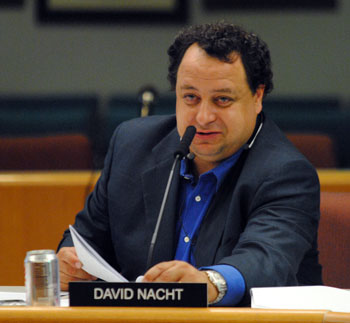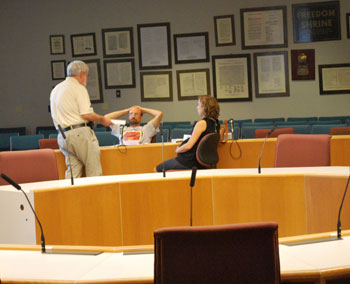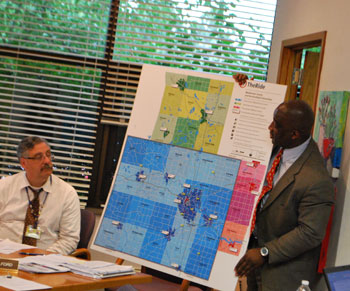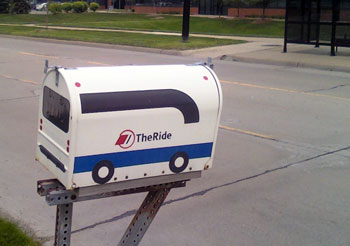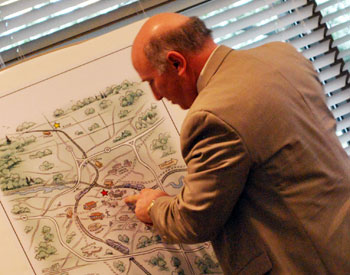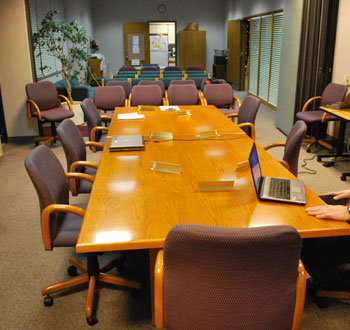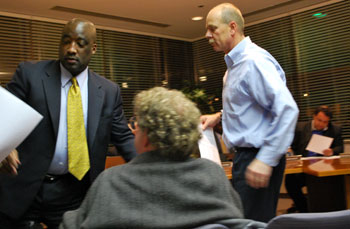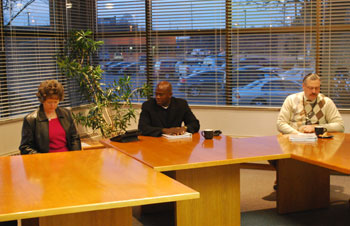DDA Takes “Baby Step” for Ypsi Buses
Ann Arbor Downtown Development Authority board meeting (Dec. 1, 2010): At its last meeting of the year, the DDA board transacted only one piece of business: It authorized a grant of $14,417 to the Ann Arbor Transportation Authority to fund service improvements, like greater frequency and reduced travel times, for the AATA #4 bus, which runs between Ypsilanti and Ann Arbor.
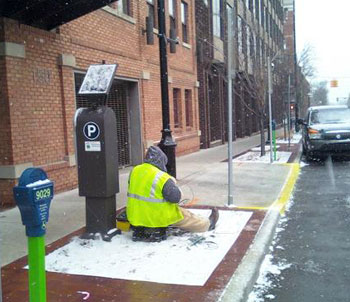
Bricks: Part of the new streetscape improvements on Fifth Avenue in front of the DDA offices. Money: New ePark payment kiosks. As part of the Bricks and Money Committee report to the DDA board, John Splitt noted that the new street lights were being "wired as we speak." That was literally true – as evidenced by the yellow-vested, hooded electrician observed an hour before the meeting started. (Photo by the writer.)
The money is offered by the DDA as a challenge to other local organizations to support service enhancements on the route, which are estimated to have a total cost of $180,000. Board member Newcombe Clark described the grant as a great first step, adding “but man, is it a baby one.”
Although the transportation grant was the only vote taken by the board at the meeting, board members entertained discussion on two topics that are likely to receive a great deal of focus in the broader community over the next few months: (1) the future use of the Library Lot; and (2) the “mutually beneficial” discussions between the city and the DDA about the parking contract under which the DDA operates the city’s parking system.
The board also heard the usual range of reports from its committees. No one addressed the board during either of the two slots set aside for public commentary. [Full Story]




